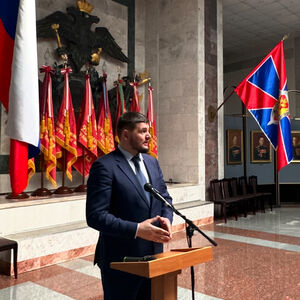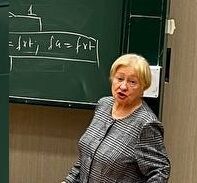Диссертация (1102782), страница 19
Текст из файла (страница 19)
Traces of a tsunamigenic earthquake in homogeneousand stratified ocean: a fully analytical solution to the axisymmetric model problem // 26thInternational Tsunami Symposium, Gocek/Turkey and Rhodes/Greece. — Turkey, 2013.— P. 108–108.112.Nurislamova G.N., Nosov M.A. Potential and vortex residual fields in the ocean due totsunamigenic earthquakes: a fully analytical solution of the axisymmetric model problem.Lectures & Abstract Volume, 10-th International Conference on Urban EarthquakeEngineering, March 1-2, 2013 Tokyo Institute of Technology, P.187.103113.Ohmachi T., Tsukiyama H., Matsumoto H. Simulation of tsunami induced by dynamicdisplacement of seabed due to seismic faulting // Bull.
Seism. Soc. Am. 2001. V. 91. №6. P. 1898–1909.114.Okada Y. Surface deformation due to shear and tensile faults in a half-space //Bulletin ofthe seismological society of America. – 1985. – 75. – №. 4. – P. 1135-1154.115.Okal E. A., Piatanesi A., Heinrich P. Tsunami detection by satellite altimetry //Journal ofgeophysical research. – 1999. – Т. 104. – №. B1. – P. 599-615.116.Okal E.A. Tsunamigenic Earthquakes: Past and Present Milestones // Pure and AppliedGeophysics.
2011, V. 168, Iss. 6-7, P. 969-995.117.Okal, E.A., and MacAyeal, D.R. Seismic recording on drifting icebergs: Catching seismicwaves, tsunamis and storms from Sumatra and elsewhere, Seismol. Res. Letts. 2006, 77,P. 659–671. DOI: 10.1785/gssrl.77.6.659118.Operational Users Guide for the Pacific Tsunami Warning and Mitigation System(PTWS). IOC Technical Series No 87, Second Edition. UNESCO/IOC 2009.119.Ostrovosky L. A., Pelinovsky E. N. Wave transformation on the surface of a fluid ofvariable depth //Akad. Nauk SSSR, Izv. Atmos. Ocean Phys. – 1970.
– Т. 6. – P. 552555.120.Paine M. P. Asteroid impacts: the extra hazard due to tsunami //Science of TsunamiHazards. – 1999. – Т. 17. – №. 3. – P. 155-166.121.Shao G., Li X., Ji C., Maeda T. Focal mechanism and slip history of 2011 Mw 9.1 off thePacific coast of Tohoku earthquake, constrained with teleseismic body and surface waves// Earth Planets Space. 2011.
V. 63. N 7. P. 559-564.122.Shokin Yu.I., Babailov V.V., Beisel S.A. et al. Mathematical Modeling in application toregional tsunami warning systems operations // Computational Science and HighPerformance Computing III, Springer. Notes on numerical fluid mechanics andmultidisciplinary design. Berlin-Heidelberg: Springer-Verlag, 2008.
V. 101. P. 52–68.123.Solem J. C. Comet and Asteroid Hazards: threat and mitigation. – National EmergencyTraining Center, 1999124.Soloviev S. L. Recurrence of tsunamis in the Pacific. //In: Tsunamis in the Pacific Ocean,edited by W. M. Adams, 1970. – Honolulu: East-West Center Press. P. 149–163.125.Takahasi R. An estimate of future tsunami damage along the Pacific coast of Japan//Bull. Earthq. Res. Inst. – 1951. – Т.
29. – №. Part I. – P. 71-95.126.Tatehata H. The new tsunami warning system of the Japan Meteorological Agency//Tsunami Hazards. – 1998. – Р. 39.104127.Thomson R., Fine I., Rabinovich A. et al. Observation of the 2009 Samoa tsunami by theNEPTUNE!Canada cabled observatory: Test data for an operational regional tsunamiforecast model // Geophys. Res. Lett. 2011. V. 38, L11701, doi:10.1029/2011GL04.128.Titov V.V., Gonzalez F.I., Mofjeld H.O., Venturato A.J. NOAA Time Seattle TsunamiMapping Project: Procedures, Data Sources, and Products.
NOAA TechnicalMemorandum OAR PMEL-124. 2003. P. 21.129.Titov, V. V., Gonzalez, F. I., Bernard, E. N., Eble, M. C., Mofjeld, H. O., Newman, J. C.,& Venturato, A. J. Real-time tsunami forecasting: Challenges and solutions. InDeveloping tsunami-resilient communities. 2005. P. 41-58. Springer Netherlands.130.Titov, V. V., González, F. I., Mofjeld, H. O., & Newman, J. C. Short-term inundationforecasting for tsunamis //Submarine Landslides and Tsunamis.
– Springer Netherlands,2003. – Р. 277-284.131.Tsushima, H., Hirata, K., Hayashi, Y., Tanioka, Y., Kimura, K., Sakai, S. I., ... & Maeda,K. (2011). Near-field tsunami forecasting using offshore tsunami data from the 2011 offthe Pacific coast of Tohoku Earthquake. Earth, planets and space,63(7), P.821-826.132.Voit S. S. Tsunamis //Annual review of fluid mechanics. – 1987. – Т.
19. – №. 1. – P.217-236.133.Ward S. N., Asphaug E. Asteroid impact tsunami: a probabilistic hazard assessment//Icarus. – 2000. – Т. 145. – №. 1. – P. 64-78.134.Watada S., Kusumoto S., Satake K. Traveltime delay and initial phase reversal of distanttsunamis coupled with the self-gravitating elastic Earth //Journal of GeophysicalResearch: Solid Earth. – 2014. – Т.
119. – №. 5. – P. 4287-4310.135.Xu, C., Liu, Y., Wen, Y., & Wang, R. (2010). Coseismic slip distribution of the 2008 Mw7.9 Wenchuan earthquake from joint inversion of GPS and InSAR data.Bulletin of theSeismological Society of America, 100(5B), P. 2736-2749.136.Yamazaki Y., Kowalik Z., Cheung K.F. Depth-integrated, non-hydrostatic model for wavebreaking and run-up // Int.
J. Numer. Meth. Fluids. 2009. V. 61. P. 473–497.137.ZaytsevA.I.,ChernovA.G.,YalcinerA.C.etal.MANUALSimulation/Visualization Code NAMIDANCE versions 4.9. February/2010.105Tsunami.
















